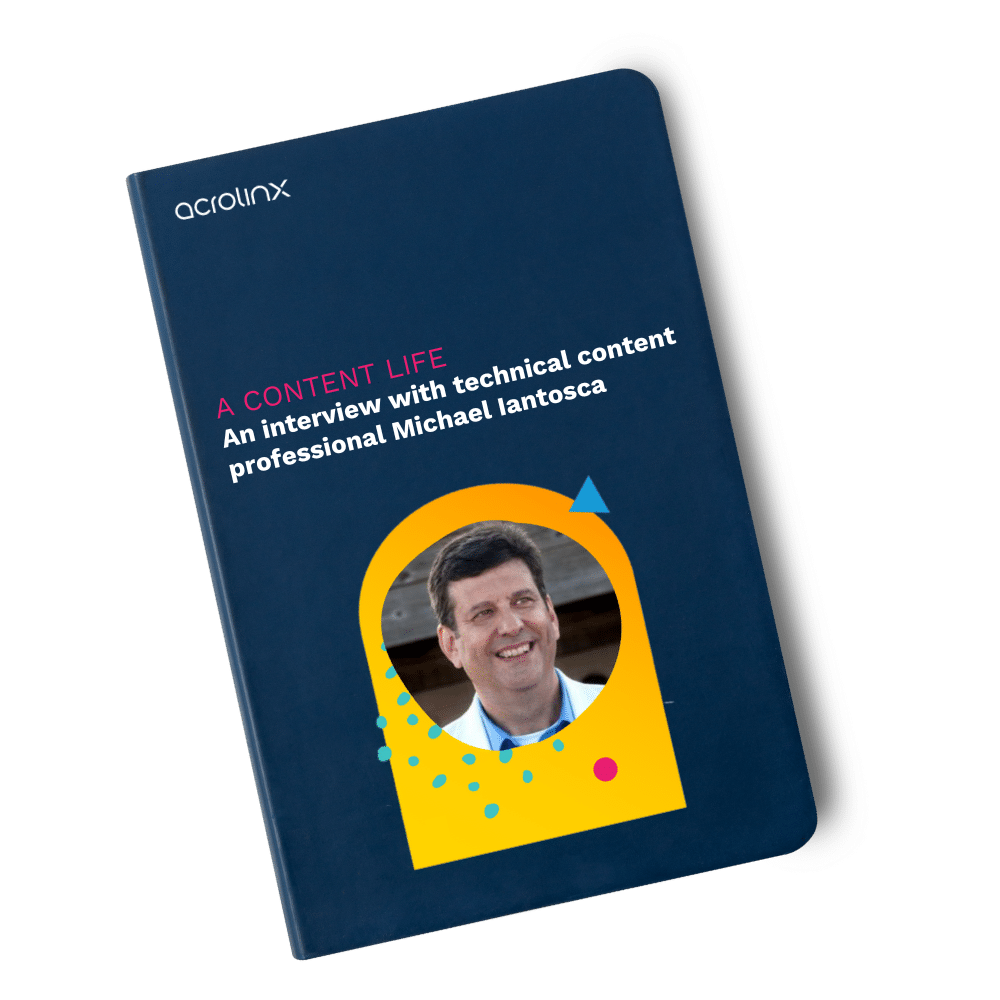
Imagine you’re a technical writing team assigned to create documentation for a complex product. You’re under pressure to deliver a high volume of content that can be easily updated, reused across different outputs, and translated efficiently. Your team decides to take advantage of DITA (Darwin Information Typing Architecture), drawn by its modularity and structured content promise.
As you start implementing DITA, inconsistencies creep in. Topics aren’t self-contained, metadata is inconsistent, and the content lacks a unified voice. The dream of seamless reuse and efficient management begins to fade.
Does this scenario sound familiar to you? We hope it doesn’t! Yet, it’s the same for many technical documentation teams that hope structured content is the cure for their content pains.
While DITA offers a solution for scalable technical documentation, it also presents potential traps for the unwary. Technical writers can inadvertently undermine its benefits through common authoring mistakes. This article explores some of the most frequent pitfalls to avoid when working with DITA. It also provides practical guidance to make your content high-quality and ready for reuse.
What’s DITA?
The Darwin Information Typing Architecture (DITA) is an XML-based standard for creating, managing, and publishing technical documentation. It provides a structured approach to content creation: Writers create small, modular units called “topics,” making DITA content ideal for reuse. The modular approach allows publishing content into multiple output formats, and provides more flexibility for translation.
Technical writing teams use DITA XML for several reasons:
Content reusability
DITA’s topic-based architecture allows reuse of individual pieces of information in multiple documents, reducing redundancy and streamlining updates. The ability to reuse content is a major time saver for busy technical documentation teams.
Modularity and standardisation
Topics are self-contained and have a dedicated purpose, serving as concepts, tasks, references, glossary entries, and more. Regardless of the topic type, DITA topics have the same internal structure. This high level of standardisation makes content easier to create, manage, and maintain.
Scalability
DITA is well suited for large volumes of documentation. It facilitates efficient content creation and management as products evolve and expand.
Multi-channel publishing
When authoring content in DITA, you can easily publish it in multiple formats, such as HTML, PDF, and online help content formats.
Efficient translation
DITA’s modular nature simplifies the translation process, as individual topics can be translated and updated independently.
Many teams use a content management system (CMS) or component content management system (CCMS) to harness the power of DITA. These systems provide a centralised and controlled environment for managing modular content like DITA topics.
Still, using a CMS or CCMS doesn’t mean technical writers won’t make mistakes when working with DITA.
Common mistakes for technical writers to avoid when using DITA
Mistake #1: Writing for output instead of structured reuse
Technical writers starting with DITA often approach content creation with a specific output format in mind, such as a PDF manual or a web page. For example, a writer might include navigational cues or cross-references only relevant to a particular output type.
Writing for a specific output undermines the fundamental principle of DITA – output-independent authoring that fosters content reuse. Reusing DITA topics that were written for a specific output format requires significant rework. This defeats the purpose of modularity and leads to content silos. It also increases maintenance efforts and inconsistencies across your documentation landscape. You lose the ability to efficiently assemble information in multiple new ways to meet different user needs.
How to avoid this mistake:
- Create self-contained topics: Focus each topic on a single topic type. Make sure it’s understandable on its own.
- Separate content from output formats: Don’t tailor content for output formats. Use DITA markup to structure your topics, allowing transformations to handle output formatting.
- Use DITA linking: Employ <xref> and <conref> elements for relationships instead of embedding navigational elements within topics.
Mistake #2: Ignoring metadata and taxonomy
Another frequent oversight in DITA authoring is writers neglecting the crucial role of metadata and taxonomy. Technical writers might focus primarily on the content, overlooking the importance of tagging topics correctly, using relevant metadata, and organising them within a well-defined taxonomy.
Without consistent and accurate metadata, there’s limited potential for content reuse. It becomes difficult to search for and identify relevant topics within your CCMS. In the same way, a poorly defined or non-existent taxonomy hinders the logical organisation of your content. As a consequence, it’s challenging to assemble information effectively for different audiences or outputs.
How to avoid this mistake:
- Identify and use the relevant metadata: Identify the main properties relevant to your content (for example, product, audience, keywords, platform) and apply this metadata consistently to each topic.
- Develop a strong taxonomy: Create a logical and hierarchical structure for organising your DITA content. This should align with your product lines, user needs, and information architecture.
- Train writers on metadata and taxonomy best practices: Make sure all content creators understand the importance of metadata and taxonomy and are proficient in applying them correctly within your CCMS.
Mistake #3: Ignoring content modularisation best practices
While DITA encourages modularity, simply breaking down large documents into smaller pieces isn’t enough. Poor content modules can lead to topics that are either too granular, which means they’re lacking enough context. Or they aren’t granular enough, containing information that should sit in a separate topic for better reuse.
How to avoid this mistake:
- Focus on one information type per topic: Each topic should have a clear and distinct purpose.
- Follow the 5 Ws and H (Who, What, When, Where, Why, How): Make sure each topic answers the relevant questions for its specific focus.
- Review and refine your topics: Regularly assess your existing topics to make sure they’re appropriately sized and focused for optimal reuse.
Mistake #4: Poor or missing content governance
A lack of clear content governance severely undermines the benefits of DITA. Without enforcing established guidelines, you’re left with inconsistent terminology, style variations, and redundant content. This clearly negates the advantages of a structured authoring environment. Inconsistent language across topics will confuse customers and damage credibility. Even if you create highly reusable content modules with strong metadata!
A content governance platform like Acrolinx provides significant value here, as it makes sure your content follows established standards.
How to avoid this mistake:
- Establish clear style guides and terminology: Define how your organisation’s content should look, sound, and the specific terms your writers should use consistently.
- Implement review and approval workflows: Make sure that all DITA content undergoes appropriate review cycles before publication.
- Use content governance tools: Use software like Acrolinx to check content for adherence to style, terminology, and compliance guidelines. Implement content governance software across your content supply chain by:
- Offering immediate writing guidance
- Adding automated checks to your CMS or CCMS workflows
- Carrying out regular content repository checks
Mistake #5: Treating DITA content like unstructured content
Approaching DITA authoring with a traditional, linear document-centric mindset misses the core principles of structured writing and reuse. Writers might focus on creating complete documents within the DITA framework — rather than thinking in terms of independent, reusable topics.
How to avoid this mistake:
- Adopt a topic-first mentality: Focus on creating individual, self-contained topics that address specific pieces of information.
- Plan for reuse from the outset: Consider potential future uses of your content as you’re authoring individual topics.
- Think in terms of content components: View your DITA content as a library of reusable building blocks writers can assemble in various ways.
Get the most out of DITA with Acrolinx
DITA offers a strong pathway to creating scalable, reusable, and maintainable technical documentation. However, as we’ve explored, even with this framework, technical writers can fall into common traps that undermine DITA’s full potential. By consciously avoiding the abovementioned missteps, you pave the way for effective modular content.
Coupling your well-authored DITA content with content governance software like Acrolinx amplifies the benefits of structured authoring. Acrolinx acts as a digital guardian, making sure your topics follow defined guidelines around compliance, brand and style guidelines, consistent terminology and more. Doing so, you maintain a high standard of quality and consistency across all outputs.
This is how you achieve the recipe for creating reusable modular content that serves your audience effectively and streamlines your entire documentation process.
For further “Insights From a DITA Technical Writing Professional”, download our guide now!
Are you ready to create more content faster?
Schedule a demo to see how content governance and AI guardrails will drastically improve content quality, compliance, and efficiency.
The Acrolinx Team





